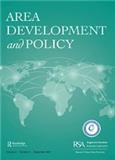
地区发展与政策(英文) (Area Development and Policy)(国际刊号)(不收版面费审稿费) 知网目次
- AMI入库
- 主管单位:
- 主办单位:
中国科学院地理科学与资源研究所、国际区域研究协会
- 国际刊号:
2379-2949;EISSN 2379-2957
- 国内刊号:
- 学科分类:
- 字数:
-
- 有无基金:
- 周期:
国际号刊-季刊
- 特殊属性:
外文期刊
- 电话:
- 邮箱:
bailu@isnrr.ac.com(官网邮箱)
- 复合因子:
0
- 综合因子:
0
- 收录:
知网目次
- 级别:
AMI入库
期刊简介
《地区发展与政策》期刊已被查看: 次
更新频次
单位占比
一作占比
投稿指南
1、该刊只有国际刊号。
2、投稿方式:在线投稿。
3、官网网址:
https://www.tandfonline.com/journals/rard20
4、投稿系统:http://mc.manuscriptcentral.com/rard
5、主办单位网址:
http://www.igsnrr.cas.cn/news/zhxw/202011/t20201102_5732403.html
(中国科学院地理科学与资源研究所)
6、官网邮箱:bailu@isnrr.ac.com(编辑部)
(更多编辑邮箱请查看期刊官网信息)
7、出刊日期:季刊,一年出版4期。
8、不收取出版费用。(官网作者须知内信息)
2023年3月24日星期五
《地区发展与政策(英文)》
(Area Development and Policy)期刊简介
【微信公众号“RSACHandADP”信息】
关于Area Development and Policy (ADP)
Area Development and Policy (《地区发展与政策》)是由中国科学院地理科学与资源研究所与国际区域研究协会(Regional Studies Association,RSA)联合创办,并由Taylor & Francis出版社出版发行的学术期刊。期刊首期内容于2016年4月上线。该刊为讨论新兴经济体最重要的发展问题提供了一个国际论坛。
ADP专注于金砖国家和新兴经济体有关的原创学术文章,主要内容旨在研究这些国家和他们之间的关系,以及它们和世界上其他国家的关系。期刊中的研究来自于这些国家和发达国家。ADP的宗旨为:1)发表区域发展和政策方面学术的、严谨的、原创的研究文章;2)对这些国家的价值观、体质和发展经验进行理论发展和解读;3)增加国家与国家之间的相互了解和认识,在相互尊重彼此差异的基础上扩大共同之处。
ADP将是一个国际级的期刊,其发表的文章内容主要涵盖不同经济和政治主体之间多标量和地理差异化的关系,具体包括这些主体生活方式、工作方式、背景的差异,并研究这些差异如何塑造区域、城市、农村地区和它们互相之间的关系。ADP认为应该对国家和地区的制度作用以及价值观进行研究,理论应该来自于这些国家和地区的经验,并非必须要来自于西欧和北美。
Q&A
Q: 为什么要在ADP 期刊发表文章?
A: ADP的特别之处在于,它发表的研究文章反映了金砖国家,全球东南部地区以及那些通过不同视角看待世界的学者的一系列观点和解决方法,其中包括西方主流期刊中不常反映的观点和方法。这类独特的项目对于促进国际交流、对话和相互理解十分重要,为实现这一目标,ADP允许作者在遵循欧美写作行为规范之外,以自身的研究视角和写作习惯发表见解。在这方面ADP是具有开创性的期刊,也因这一特点受到了全球研究界的广泛欢迎。
Q: ADP 的贡献及重要性体现在哪里?
A: ADP被列入如下引文索引数据库中:
● Clarivate Analytics’ Emerging Sources Citation Index
● Scopus
Q: ADP的投稿要求是什么?
A: 标准研究论文(8000字), 评论文章(6000字), 研究笔记(以短篇文章呈现原始研究的结果,并简要地介绍与现有的经验和理论文献相关的研究,4000字), 评论(对研究文章或评论文章进行重要评论或补充论点、证据的短文,2000字)。
欢迎大家向期刊Area Development and Policy投稿,详情请登录ADP官网
https://www.tandfonline.com/toc/rard20/current 查询。
《地区发展与政策(英文)》
(Area Development and Policy)作者须知
【官网信息】
Instructions for authors
About the journal
Area Development and Policy is an international, peer reviewed, publishing high-quality, original research. Please see the journal’s Aims & Scope for information about its focus and peer-review policy.
Please note that this journal only publishes manuscripts in English.
Along with standard Research Articles (8,000 words) and Review Articles (6,000 words), Area Development and Policy also welcomes Research Notes (short articles presenting the results of original research and which briefly situates the research in relation to the existing empirical and theoretical literature) of up to 4,000 words, and Commentaries (short articles commenting in a significant way on, or supplementing arguments and evidence in, a Research Article or a Review Article) of up to 2,000 words. Generally speaking, papers that are considered worthy of closer examination by the Managing Editors will be allocated to Editors according to the geographical area to which they relate.
Open Access
You have the option to publish open access in this journal via our Open Select publishing program. Publishing open access means that your article will be free to access online immediately on publication, increasing the visibility, readership and impact of your research. Articles published Open Select with Taylor & Francis typically receive 32% more citations* and over 6 times as many downloads** compared to those that are not published Open Select.
Your research funder or your institution may require you to publish your article open access. Visit our Author Services website to find out more about open access policies and how you can comply with these.
You will be asked to pay an article publishing charge (APC) to make your article open access and this cost can often be covered by your institution or funder. Use our APC finder to view the APC for this journal.
Please visit our Author Services website or contact openaccess@tandf.co.uk if you would like more information about our Open Select Program.
*Citations received up to Jan 31st 2020 for articles published in 2015-2019 in journals listed in Web of Science®.
**Usage in 2017-2019 for articles published in 2015-2019.
Peer review
Taylor & Francis is committed to peer-review integrity and upholding the highest standards of review. Once your paper has been assessed for suitability by the editor, it will then be double blind peer-reviewed by independent, anonymous expert referees. Find out more about what to expect during peer review and read our guidance on publishing ethics.
Preparing your paper
Word limits
Please include a word count for your paper.
A typical research article for this journal should be no more than 8000 words. A typical Review Article for this journal should be no more than 6000 words. A typical Research Note for this journal should be no more than 4000 words. A typical Commentary for this journal should be no more than 2000 words; these limits include tables, references, figure captions, endnotes.
Style guidelines
Please refer to these style guidelines when preparing your paper, rather than any published articles or a sample copy.
Please use British -ize spelling style consistently throughout your manuscript.
Please use single quotation marks, except where 'a quotation is "within" a quotation'. Please note that long quotations should be indented without quotation marks.
The introduction should clearly define the nature of the problem being considered. The new contribution the paper makes should be identified and situated in relation to the relevant scientific literature and, wherever possible, the practical relevance of its results should be indicated
Appendices: any supporting information provided in this way will be published as supplemental online material (see below) and should be clearly labelled as such on submission.
The appropriate Journal of Economic Literature (JEL) classifications should be given (a maximum of 4).
Formatting and templates
Papers may be submitted in any standard format, including Word and LaTeX. Figures should be saved separately from the text. To assist you in preparing your paper, we provide formatting templates.
Word templates are available for this journal. Please save the template to your hard drive, ready for use.
If you are not able to use the templates via the links (or if you have any other template queries) please contact us here.
References
Please use this reference style guide when preparing your paper. An EndNote output style is also available to assist you.
Checklist: what to include
Author details. All authors of a manuscript should include their full name and affiliation on the cover page of the manuscript. Where available, please also include ORCID identifiers and social media handles (Facebook, Twitter or LinkedIn). One author will need to be identified as the corresponding author, with their email address normally displayed in the article PDF (depending on the journal) and the online article. Authors’ affiliations are the affiliations where the research was conducted. If any of the named co-authors moves affiliation during the peer-review process, the new affiliation can be given as a footnote. Please note that no changes to affiliation can be made after your paper is accepted. Read more on authorship.
A non-structured abstract of no more than 150 words. Read tips on writing your abstract.
You can opt to include a video abstract with your article. Find out how these can help your work reach a wider audience, and what to think about when filming.
4-6 keywords. Read making your article more discoverable, including information on choosing a title and search engine optimization.
Funding details. Please supply all details required by your funding and grant-awarding bodies as follows:
For single agency grants: This work was supported by the [Funding Agency] under Grant [number xxxx].
For multiple agency grants: This work was supported by the [funding Agency 1]; under Grant [number xxxx]; [Funding Agency 2] under Grant [number xxxx]; and [Funding Agency 3] under Grant [number xxxx].
Disclosure statement. This is to acknowledge any financial interest or benefit that has arisen from the direct applications of your research. Further guidance on what is a conflict of interest and how to disclose it.
Data availability statement. If there is a data set associated with the paper, please provide information about where the data supporting the results or analyses presented in the paper can be found. Where applicable, this should include the hyperlink, DOI or other persistent identifier associated with the data set(s). Templates are also available to support authors.
Data deposition. If you choose to share or make the data underlying the study open, please deposit your data in a recognized data repository prior to or at the time of submission. You will be asked to provide the DOI, pre-reserved DOI, or other persistent identifier for the data set.
Geolocation information. Submitting a geolocation information section, as a separate paragraph before your acknowledgements, means we can index your paper’s study area accurately in JournalMap’s geographic literature database and make your article more discoverable to others.
Supplemental online material. Supplemental material can be a video, dataset, fileset, sound file or anything which supports (and is pertinent to) your paper. We publish supplemental material online via Figshare. Find out more about supplemental material and how to submit it with your article.
Figures. Figures should be high quality (1200 dpi for line art, 600 dpi for grayscale and 300 dpi for color, at the correct size). Figures should be saved as TIFF, PostScript or EPS files. More information on how to prepare artwork.
Tables. Tables should present new information rather than duplicating what is in the text. Readers should be able to interpret the table without reference to the text. Please supply editable files.
Equations. If you are submitting your manuscript as a Word document, please ensure that equations are editable. More information about mathematical symbols and equations.
Units. Please use SI units (non-italicized).
Using third-party material in your paper
You must obtain the necessary permission to reuse third-party material in your article. The use of short extracts of text and some other types of material is usually permitted, on a limited basis, for the purposes of criticism and review without securing formal permission. If you wish to include any material in your paper for which you do not hold copyright, and which is not covered by this informal agreement, you will need to obtain written permission from the copyright owner prior to submission. More information on requesting permission to reproduce work(s) under copyright.
Submitting your paper
This journal uses ScholarOne Manuscripts to manage the peer-review process. If you haven't submitted a paper to this journal before, you will need to create an account in the submission centre. Please read the guidelines above and then submit your paper in the relevant author centre where you will find user guides and a helpdesk.
If you are submitting in LaTeX, please convert the files to PDF beforehand (you may also need to upload or send your LaTeX source files with the PDF).
Please note that Area Development and Policy uses Crossref™ to screen papers for unoriginal material. By submitting your paper to Area Development and Policy you are agreeing to originality checks during the peer-review and production processes.
On acceptance, we recommend that you keep a copy of your Accepted Manuscript. Find out more about sharing your work.
Data Sharing Policy
This journal applies the Taylor & Francis Basic Data Sharing Policy. Authors are encouraged to share or make open the data supporting the results or analyses presented in their paper where this does not violate the protection of human subjects or other valid privacy or security concerns.
Authors are encouraged to deposit the dataset(s) in a recognized data repository that can mint a persistent digital identifier, preferably a digital object identifier (DOI) and recognizes a long-term preservation plan. If you are uncertain about where to deposit your data, please see this information regarding repositories.
Authors are further encouraged to cite any data sets referenced in the article and provide a Data Availability Statement.
At the point of submission, you will be asked if there is a data set associated with the paper. If you reply yes, you will be asked to provide the DOI, pre-registered DOI, hyperlink, or other persistent identifier associated with the data set(s). If you have selected to provide a pre-registered DOI, please be prepared to share the reviewer URL associated with your data deposit, upon request by reviewers.
Where one or multiple data sets are associated with a manuscript, these are not formally peer reviewed as a part of the journal submission process. It is the author’s responsibility to ensure the soundness of data. Any errors in the data rest solely with the producers of the data set(s).
……
更多详情:
https://www.tandfonline.com/action/authorSubmission?show=instructions&journalCode=rard20#Publication_charges
上一篇:新闻战线(不收版面费审稿费)下一篇:攀枝花学院学报(不收版面费审稿费)
《地区发展与政策》同类经管期刊
-
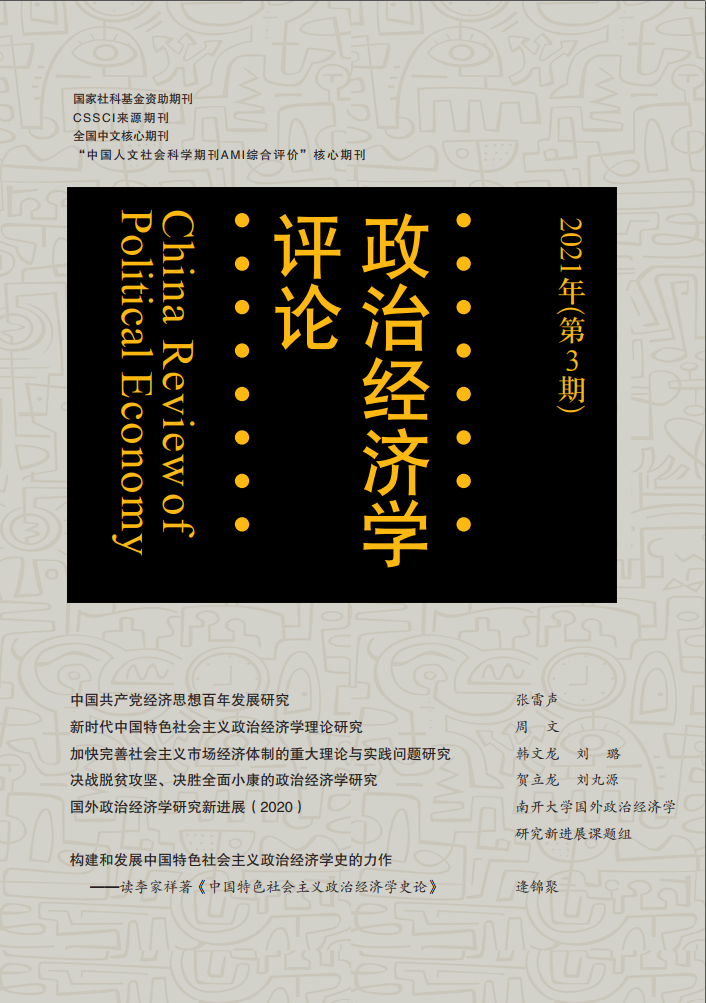
政治经济学评论(原:复印报刊资料(海外劳动经济与人力资源管理))(不收版面费审稿费)
C刊,北核,AMI核心,武A,国社科-合格
CN中文-双月刊影响因子3.761
-

经济体制改革
C刊,北核,科核,武A,AMI扩
CN中文-双月刊影响因子3.662
-

企业经济(不收版面费审稿费)
北核,科核,AMI核心,武A
CN中文-月刊影响因子2.586
-
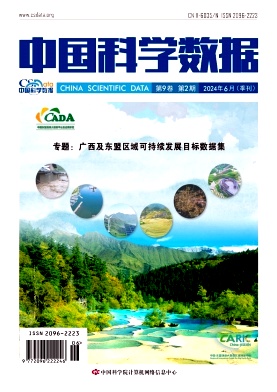
中国科学数据(中英文网络版)
CSCD,科核,高T3,CACJ-核心
CN中文-季刊影响因子0.702
-
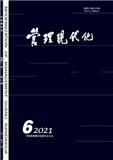
管理现代化
北核,科核,武A-,AMI扩
CN中文-双月刊影响因子3.141
-
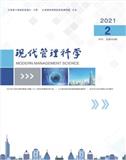
现代管理科学(不收版面费审稿费)
北核,武A-,AMI入库
CN中文-双月刊影响因子1.392
-
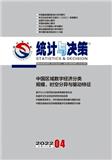
统计与决策
C刊,北核,科核,武A-,AMI扩
CN中文-半月刊影响因子3.034
-
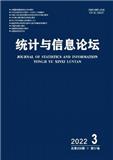
统计与信息论坛
C刊,北核,科核,AMI核心,武A
CN中文-月刊影响因子3.045
常见问题
-
地区发展与政策杂志社官网、联系方式是什么?
地区发展与政策杂志社官网:https://www.tandfonline.com/journals/rard20
投稿网址:http://mc.manuscriptcentral.com/rard
投稿邮箱:bailu@isnrr.ac.com(官网邮箱) -
地区发展与政策杂志是核心期刊么?
地区发展与政策是核心期刊,级别是:AMI入库, 是:经管分类下的知网目次收录的期刊。
-
请问你们是地区发展与政策杂志社吗?
我们不是《地区发展与政策》杂志社。本站主要从事期刊信息展示与期刊推荐,不是任何杂志官网,直投稿件请联系杂志社。本站仅提供免费的学术指导、论文辅导、期刊投稿信息整理收集服务。
-
你们指导服务后可以保证文章被发表吗?
期刊发表的成功与否,主要取决于文章内容的质量。编辑老师会根据研究领域、创新性等多因素进行考量。我们会帮助您理解期刊的发表要求,助力提升发表几率,从而增加发表的机会。
-
晋级论文能否在报纸上发表?
在学术界,论文的发表往往被视为研究者职业发展的重要一环。晋级论文,即为了获得更高职称或学术地位而撰写的学术论文,通常需在专业期刊上发表。然而,许多人可能会问
